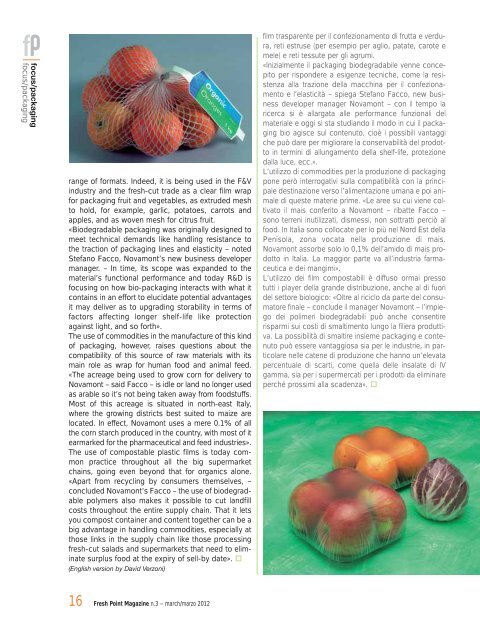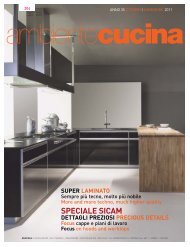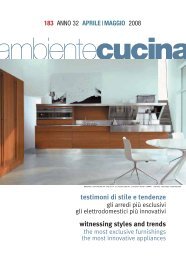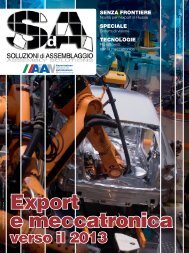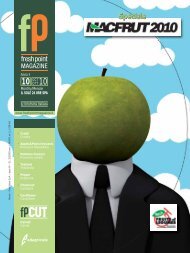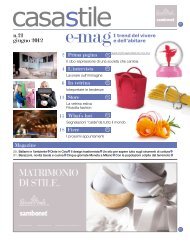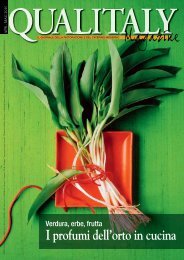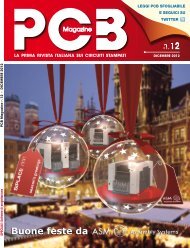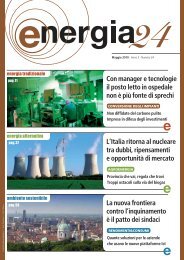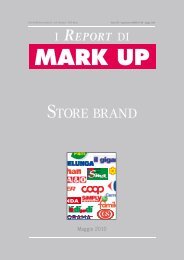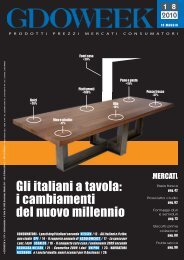Fresh Point Magazine - B2B24 - Il Sole 24 Ore
Fresh Point Magazine - B2B24 - Il Sole 24 Ore
Fresh Point Magazine - B2B24 - Il Sole 24 Ore
Create successful ePaper yourself
Turn your PDF publications into a flip-book with our unique Google optimized e-Paper software.
focus/packaging<br />
focus/packaging<br />
range of formats. Indeed, it is being used in the F&V<br />
industry and the fresh-cut trade as a clear film wrap<br />
for packaging fruit and vegetables, as extruded mesh<br />
to hold, for example, garlic, potatoes, carrots and<br />
apples, and as woven mesh for citrus fruit.<br />
«Biodegradable packaging was originally designed to<br />
meet technical demands like handling resistance to<br />
the traction of packaging lines and elasticity – noted<br />
Stefano Facco, Novamont’s new business developer<br />
manager. – In time, its scope was expanded to the<br />
material’s functional performance and today R&D is<br />
focusing on how bio-packaging interacts with what it<br />
contains in an effort to elucidate potential advantages<br />
it may deliver as to upgrading storability in terms of<br />
factors affecting longer shelf-life like protection<br />
against light, and so forth».<br />
The use of commodities in the manufacture of this kind<br />
of packaging, however, raises questions about the<br />
compatibility of this source of raw materials with its<br />
main role as wrap for human food and animal feed.<br />
«The acreage being used to grow corn for delivery to<br />
Novamont – said Facco – is idle or land no longer used<br />
as arable so it’s not being taken away from foodstuffs.<br />
Most of this acreage is situated in north-east Italy,<br />
where the growing districts best suited to maize are<br />
located. In effect, Novamont uses a mere 0.1% of all<br />
the corn starch produced in the country, with most of it<br />
earmarked for the pharmaceutical and feed industries».<br />
The use of compostable plastic films is today common<br />
practice throughout all the big supermarket<br />
chains, going even beyond that for organics alone.<br />
«Apart from recycling by consumers themselves, –<br />
concluded Novamont’s Facco – the use of biodegradable<br />
polymers also makes it possible to cut landfill<br />
costs throughout the entire supply chain. That it lets<br />
you compost container and content together can be a<br />
big advantage in handling commodities, especially at<br />
those links in the supply chain like those processing<br />
fresh-cut salads and supermarkets that need to eliminate<br />
surplus food at the expiry of sell-by date».<br />
(English version by David Verzoni)<br />
16 <strong>Fresh</strong> <strong>Point</strong> <strong>Magazine</strong> n.3 – march/marzo 2012<br />
film trasparente per il confezionamento di frutta e verdura,<br />
reti estruse (per esempio per aglio, patate, carote e<br />
mele) e reti tessute per gli agrumi.<br />
«Inizialmente il packaging biodegradabile venne concepito<br />
per rispondere a esigenze tecniche, come la resistenza<br />
alla trazione della macchina per il confezionamento<br />
e l’elasticità – spiega Stefano Facco, new business<br />
developer manager Novamont – con il tempo la<br />
ricerca si è allargata alle performance funzionali del<br />
materiale e oggi si sta studiando il modo in cui il packaging<br />
bio agisce sul contenuto, cioè i possibili vantaggi<br />
che può dare per migliorare la conservabilità del prodotto<br />
in termini di allungamento della shelf-life, protezione<br />
dalla luce, ecc.».<br />
L’utilizzo di commodities per la produzione di packaging<br />
pone però interrogativi sulla compatibilità con la principale<br />
destinazione verso l’alimentazione umana e poi animale<br />
di queste materie prime. «Le aree su cui viene coltivato<br />
il mais conferito a Novamont – ribatte Facco –<br />
sono terreni inutilizzati, dismessi, non sottratti perciò al<br />
food. In Italia sono collocate per lo più nel Nord Est della<br />
Penisola, zona vocata nella produzione di mais.<br />
Novamont assorbe solo lo 0,1% dell’amido di mais prodotto<br />
in Italia. La maggior parte va all’industria farmaceutica<br />
e dei mangimi».<br />
L’utilizzo dei film compostabili è diffuso ormai presso<br />
tutti i player della grande distribuzione, anche al di fuori<br />
del settore biologico: «Oltre al riciclo da parte del consumatore<br />
finale – conclude il manager Novamont – l’impiego<br />
dei polimeri biodegradabili può anche consentire<br />
risparmi sui costi di smaltimento lungo la filiera produttiva.<br />
La possibilità di smaltire insieme packaging e contenuto<br />
può essere vantaggiosa sia per le industrie, in particolare<br />
nelle catene di produzione che hanno un’elevata<br />
percentuale di scarti, come quella delle insalate di IV<br />
gamma, sia per i supermercati per i prodotti da eliminare<br />
perché prossimi alla scadenza».


